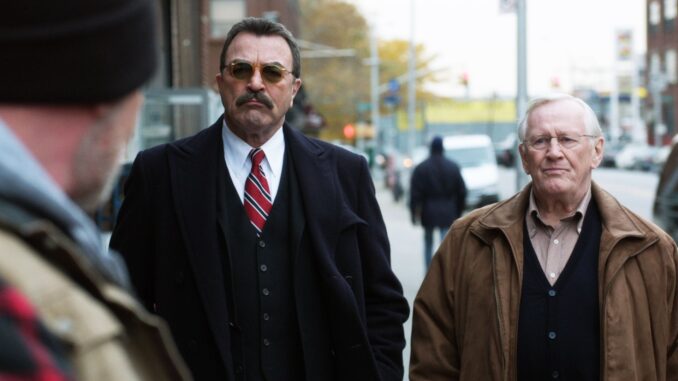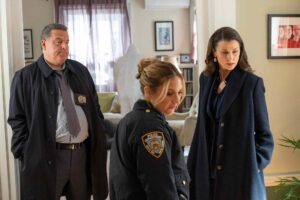
Since its premiere in 2010, Blue Bloods has captivated audiences with its portrayal of the multi-generational Reagan family of law enforcement. Over nearly 14 years, viewers have followed the Reagans as they navigate personal and professional challenges, often confronting injustice within and outside the system. As the current season unfolds, potentially marking the series’ conclusion with just six episodes left, Episode 13, titled “Bad to Worse,” feels like a missed opportunity to set up an impactful finale.
In this episode, Frank Reagan (Tom Selleck) finds himself embroiled in conflict as he attempts to mediate tensions between Fire Commissioner Veronica Radley (Mira Sorvino) and Mayor Peter Chase (Dylan Walsh) after the mayor skips a firefighter’s funeral. Meanwhile, Frank’s son, Detective Danny (Donnie Wahlberg), faces a career crisis while investigating a cold case involving a skeleton found in a storage unit. Frank’s daughter Erin (Bridget Moynahan) encounters significant obstacles in her case against a former cop, with Grandpa Henry (Len Cariou) set to testify for the defense. Adding to the chaos, Edie navigates the antics of Nico, an inmate claiming he needs to donate a kidney while under arrest.
While the episode offers a whirlwind of drama, it ultimately plays it safe, presenting individual struggles rather than forging a compelling narrative arc toward the series’ end.
A Familiar Format
“Bad to Worse” is a competent episode, with its intertwined subplots showcasing the Reagans in their element. The escalating feud between Radley and Chase, Erin and Henry’s legal dilemmas, and Danny’s haunting cold case all illustrate how seemingly minor conflicts can spiral into deeper, more complex issues. Each storyline reflects the series’ signature blend of crime and family drama, featuring moments of levity amid the tension.

The individual arcs—like Edie’s bizarre kidney donor case and Danny’s chilling discovery—provide character development and showcase the Reagans’ resourcefulness in pursuing justice. However, after 13 seasons, the familiarity of these narratives becomes a double-edged sword. With the end in sight, the episode doesn’t convey the urgency or stakes one would expect.
Missed Opportunities for Setup
There are hints of a potential showdown between Frank and Mayor Chase, a fitting culmination of their fraught relationship. The prospect of reconciliation—or a dramatic confrontation—could elevate the finale, particularly given Chase’s contentious behavior throughout the season. However, many plot threads in “Bad to Worse” are resolved too neatly, leaving little groundwork for the series’ climax.
While Danny’s storyline hints at broader implications, the resolution of the other arcs feels somewhat disconnected from a larger narrative purpose. As fans anticipate a final showdown, the lack of substantial build-up in this episode is disappointing. The potential for Frank and Chase to team up or face off provides a tantalizing possibility, yet this episode largely sidesteps that tension.
Conclusion
“Bad to Worse” delivers the expected mix of procedural drama and familial conflict that has defined Blue Bloods, but it ultimately lacks the gravitas needed to propel the series toward its conclusion. As the Reagans face familiar challenges, the episode serves more as a standalone exploration of character dynamics rather than a meaningful setup for the anticipated finale. With only a few episodes left, viewers are left hoping for a more impactful narrative that honors the legacy of this long-running series.
